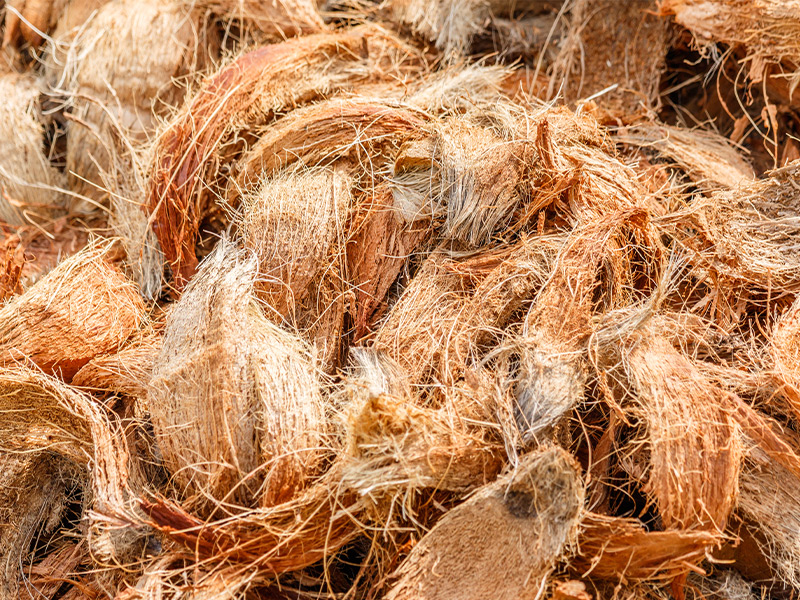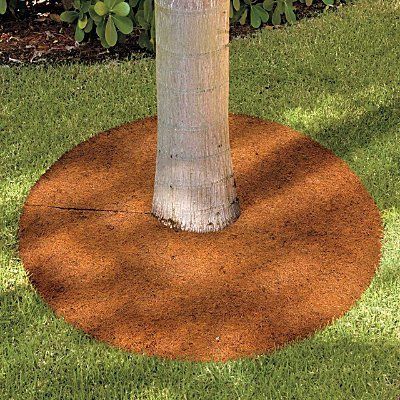No products in the cart.
News
What Is Coconut Coir: Tips On Using Coconut Coir As Mulch
Using coconut coir as mulch is an environmentally friendly alternative to non-renewable mulches, such as peat moss. This important point, however, only scratches the surface when it comes to coir mulch benefits. Let’s learn the reasons why using coir for mulch is a great idea for many gardeners.
What is Coconut Coir?
Coconut fiber, or coir, a natural waste product resulting from the processing of coconuts, comes from the outer shell of the coconut husks. The fibers are separated, cleaned, sorted and graded before shipping.
Coir mulch uses include brushes, ropes, upholstery stuffing and doormats. In recent years, coir has become widely used by gardeners as a mulch, soil amendment and potting soil ingredient.
Coir Mulch Benefits
Renewability – Coir mulch is a renewable resource, unlike peat moss, which comes from non-renewable, diminishing peat bogs. Additionally, peat mining is not environmentally friendly, while harvesting of coir poses no threat to the environment. The downside is that although coir mulch is a sustainable industry, there is concern about the energy used to transport the mulch from its point of origin in places like Sri Lanka, India, Mexico and the Philippines.
Water retention – Coir mulch holds 30 percent more water than peat. It absorbs water easily and drains well. This is an important benefit in drought-plagued areas, as use of mulch may reduce water use in the garden by as much as 50 percent.
Compost – Coir, which is rich in carbon, is a useful addition to the compost pile, helping to balance nitrogen-rich materials like grass clippings and kitchen waste. Add coir to the compost pile at a rate of two parts coir to one part green material, or use equal parts coir and brown material.
Soil amendment – Coir is a versatile substance used to improve difficult soil. For example, coir mulch helps sandy soil retain nutrients and moisture. As an amendment for clay-based soil, coir improves soil quality, preventing compaction and allowing freer movement of moisture and nutrients.
Soil pH – Coir has a near-neutral pH level of 5.5 to 6.8, unlike peat, which is highly acidic with a pH of 3.5 to 4.5. This is an ideal pH for most plants, with the exception of acid-loving plants like rhododendron, blueberries and azaleas.
Using Coconut Coir as Mulch
Coir mulch is available in tightly compressed bricks or bales. Although coir mulch is easy to apply, it’s necessary to soften the bricks first by soaking them in water for at least 15 minutes.
Use a large container for soaking coir, as the size will increase by five to seven times. A large bucket is adequate for a brick, but soaking a bale requires a container such as a large garbage can, wheelbarrow or a plastic small wading pool.
Once the coir has been soaked, applying coir mulch is really no different than using peat or bark mulch. A layer 2 to 3 inches thick is adequate, although you may want to use more to keep weeds in check. If weeds are a serious concern, consider using landscape cloth or other barrier under the mulch.
Safimex supplies Natural Coconut Coir Mulch Mat, coir bale, … for export with high quality and competitive price for export. Please feel free to us for more details of our coconut products
Lucy (Ms.)
Export Executive
Email: Sales2@safimex.com
Skype: gautrucluca | HP/WhatsApp: (+84) 396802832
SAFIMEX JOINT STOCK COMPANY
Head office: 216/20A Duong Ba Trac street, Ward 2, District 8, HCM City, Vietnam.
Sales office: 14, Street 8, Hiep Binh Chanh Ward, Thu Duc District, Hochiminh City, Vietnam.


